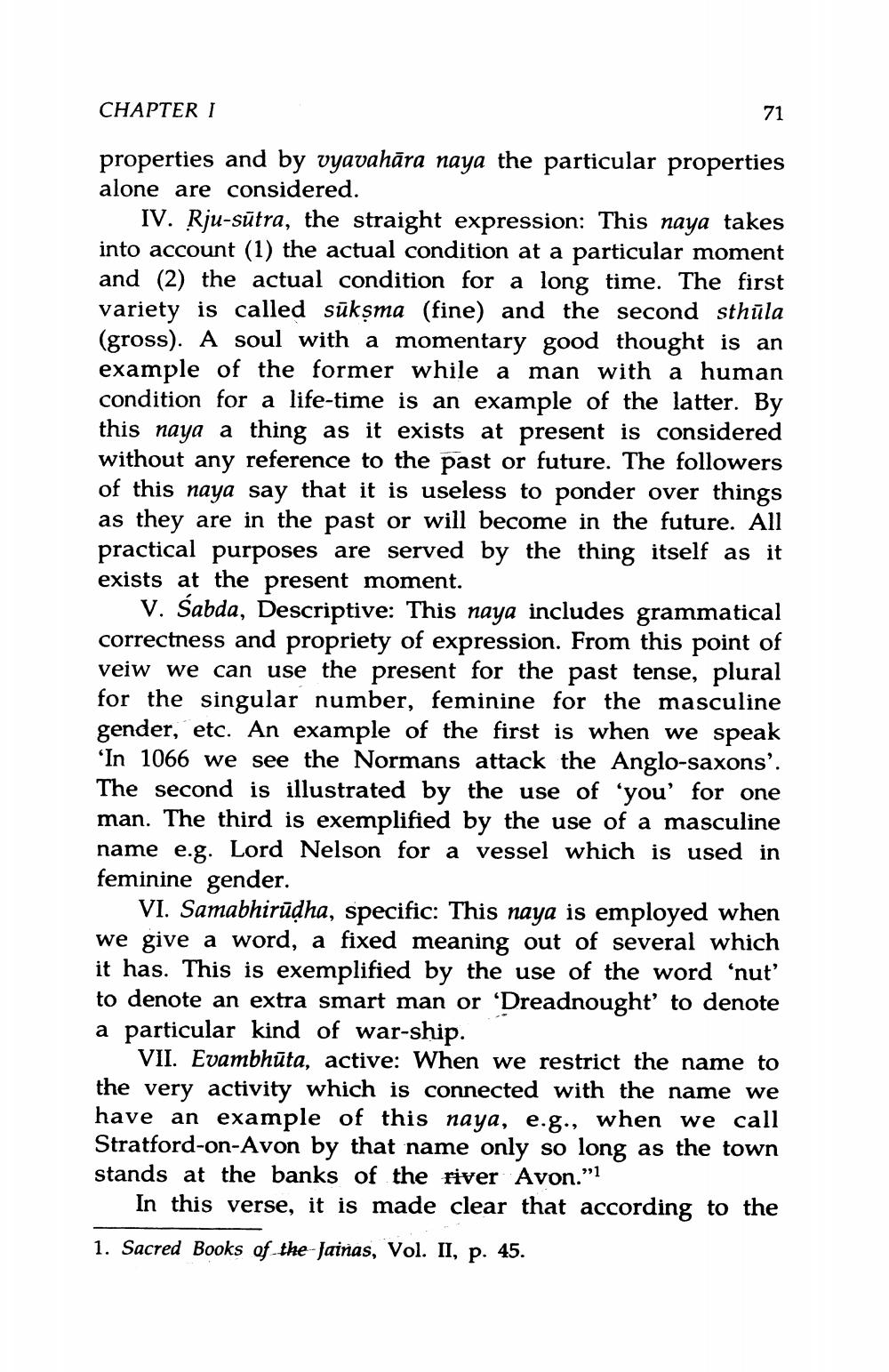________________
CHAPTER I
71
properties and by vyavahāra naya the particular properties alone are considered.
IV. Rju-sūtra, the straight expression: This naya takes into account (1) the actual condition at a particular moment and (2) the actual condition for a long time. The first variety is called sūkşma (fine) and the second sthūla (gross). A soul with a momentary good thought is an example of the former while a man with a human condition for a life-time is an example of the latter. By this naya a thing as it exists at present is considered without any reference to the past or future. The followers of this naya say that it is useless to ponder over things as they are in the past or will become in the future. All practical purposes are served by the thing itself as it exists at the present moment.
V. Sabda, Descriptive: This naya includes grammatical correctness and propriety of expression. From this point of veiw we can use the present for the past tense, plural for the singular number, feminine for the masculine gender, etc. An example of the first is when we speak 'In 1066 we see the Normans attack the Anglo-saxons'. The second is illustrated by the use of 'you' for one man. The third is exemplified by the use of a masculine name e.g. Lord Nelson for a vessel which is used in feminine gender.
VI. Samabhirūdha, specific: This naya is employed when we give a word, a fixed meaning out of several which it has. This is exemplified by the use of the word ‘nut' to denote an extra smart man or 'Dreadnought' to denote a particular kind of war-ship.
VII. Evambhūta, active: When we restrict the name to the very activity which is connected with the name we have an example of this naya, e.g., when we call Stratford-on-Avon by that name only so long as the town stands at the banks of the river Avon.”1
In this verse, it is made clear that according to the 1. Sacred Books of the- Jainas, Vol. II, p. 45.




